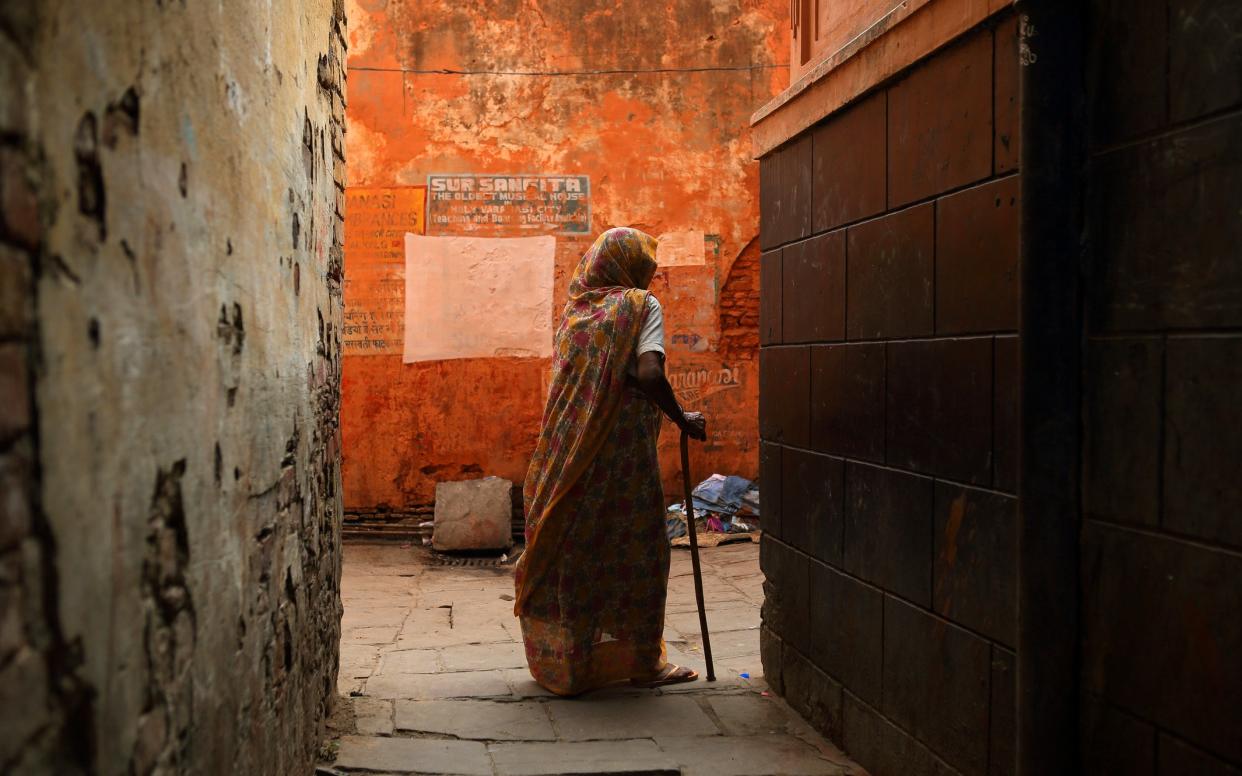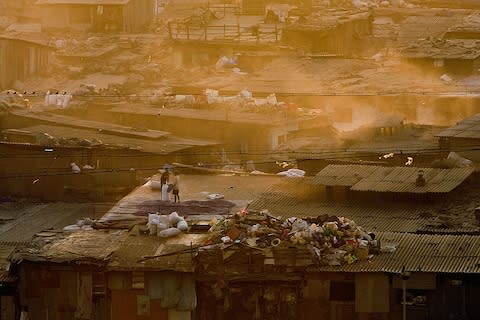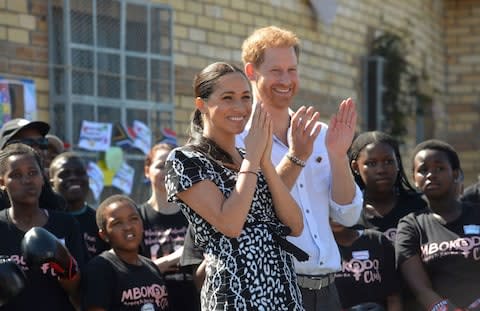Can a 'slum tour' ever be ethical?

Paying to watch people living in poverty, you could argue, is intrinsically odd. Whether driving through Brazil’s favelas in a bulletproof tank or shuffling awkwardly in the dust as dancers perform a contrived cultural show, a whole industry has evolved around so-called “human safaris” – where residents are reduced to curiosities.
Is this acceptable? Human rights organisation Survival International condemns any tours that use derogatory terms such as “primitive” and promote “nakedness” or traditional dress as a selling point.
Does that rule out community visits completely? Not at all. Experiencing different cultures is one of the great joys and educations of travel, but, pushed for time and dealing with a language barrier, we can’t always rely on serendipitous encounters. That makes organised, carefully-planned visits the best compromise.
The key is to focus on two-way communication to avoid a “them and us” situation, an approach adopted by adventure company Secret Compass. “These experiences can be a valuable social exchange,” says managing director Tom Bodkin. “Relationships develop as you both learn more about each other, and as a result you find a sense of shared humanity.”
All slum tours, however, are not created equal. Here we investigate options around the developing world.
India's slums

This year, a tour of one of the world’s biggest slums was voted tourists’ most popular attraction in India. The sprawling Dharavi slum in Mumbai was rated the favourite tourist experience of 2019 in India and even beat the Taj Mahal, according to TripAdvisor’s Travellers’ Choice Awards.
It was Danny Boyle's hit 2008 blockbuster Slumdog Millionaire that sparked the trend for tours of Mumbai's most impoverished districts.
Dharavi, which featured in the film, is a shantytown of more than 400 acres and a million people in the northern suburbs of the city, and is today used to Western visitors. When the tours started more than a decade ago, however, they took a lot of flak - a government minister even threatened to close them down on the grounds they were exploitative and undignified.
Atitudes have since shifted. After Telegraph Travel's Nigel Richardson visited, he wrote: "The tours are sensitively run, with the blessing of community representatives, using local guides who are said to be from ‘humble backgrounds’. Crucially, 80 per cent of profits go to local charities.
"As for the slum dwellers and workers themselves, they struck me as far too busy to even notice the occasional bunch of awkward tourists hesitating over whether it is appropriate to take photographs. For Dharavi is just about the most energetic and kaleidoscopically productive place you will ever visit. Its warren of alleyways heave with workshops, tailors, recycling plants, schools, barbers, temples, doctors and poppadom-makers who generate an estimated turnover of nearly USD700 million a year."

He adds: "Tours of places like Dharavi - provided they are sensitively conducted with the blessing of locals, and there is direct pecuniary benefit - are a unique opportunity for us of the Western World to see the real people, in all their dignity and resourcefulness, on the far side. Understanding - for a few minutes at least - how the other half live."
Reality Tours and Travel works with communities in Mumbai and Delhi, insisting that no photographs are taken, employing local guides from underprivileged areas, including lunch with a local family and returning 80 per cent of post-tax profits to the community, as well as providing free computer training and English lessons.
The company offers a slum tour with family lunch day trip from around £16, including guide. Daily departures. (realitytoursandtravel.com/slum-tours-mumbai)
Favela tours
Favelas (Portuguese for ‘slum’ or ‘shanty town’) are urban neighbourhoods of high density informal or unplanned housing. They exist in all major Brazilian cities, range in size from a few blocks to large sprawling areas, and can border areas frequented by tourists and visitors.
Rio is home to the largest and most notorious favelas and in the early 2000s, city authorities launched a £300 million programme to improve both their reality and their image. In 2002, Marcelo Armstrong, who runs a company called Favela Tours, told The Telegraph: "Most people think if they go into a favela they will be shot or kidnapped. If that was true I wouldn't be doing these tours."
Favela-specific tours can be a safer way to visit the few tourist-friendly favelas and get a taste for local life. While again, it is hard to argue that they are not voyeuristic, money goes to local merchants and artisans and also into local schools, so tours are also undoubtedly beneficial.

According to the Foreign Office (FCO), however, it is inadvisable to visit them.
"The security situation in many favelas is unpredictable, particularly in Rio de Janeiro," it states. “Any visit to a favela can be dangerous. We recommend that you avoid these areas in all cities, including ‘favela tours’ marketed to tourists and any accommodation, restaurants or bars advertised as being within a favela.”
While rare, visitors have fallen victim to violent incidents in the past. In October 2017 a tourist on a favela tour in Rio was accidentally shot dead by police. "There have been injuries and deaths as a result of stray bullets in and near favelas," the FCO adds.
If you do choose to go on a favela tour, it is important to be careful about taking photos. Experts suggest that residents connected to drug gangs can mistake this for police activity or worry they will be identified outside of their community.
South Africa’s townships
Originally created as urban enclaves of cheap labour for the comfort of the white settler population, South Africa's townships, by the time Nelseon Mandela was released in the early Nineties bore testimony to the ravages of 350 years of colonialism and apartheid.
Apartheid officials built forlorn, small dwellings for blacks - mockingly named "match box houses" because of their square shape - which were assembled in barrack-like structures. Most townships were built with only two entry points to ensure that those who came and went were easily monitored.

The squalid living conditions endured by those who populated them had often, during the liberation struggle, been the focus of black rage against the system.
Decades later, they remain hotbeds for violence. In particular, Cape Town’s sprawling shanty towns, stretching along the notorious Cape Flats, are so dangerous, that in July 1,300 South African soldiers were deployed in an attempt to keep the peace among warring gangs. Latest official figures show murders in the Western Cape, which includes Cape Town, rose to nearly 4,000 in the year up to April 2019.
Despite this, the Duke and Duchess of Sussex this summer kicked off their ten-day Royal tour there with a visit Nyanga, a township so violent it has been dubbed South Africa’s murder capital. They ended it with a visit to another township near Johannesburg where they met with young people and entrepreneurs who are working to tackle the rising unemployment challenge in South Africa.
So is it ethical for the rest of us to visit these societies? Responsible Travel's advice is thus: "There are two fundamental things to remember: only go on a tour that has been created and supported by the residents of that township, and put your camera away.
"There are reasons why these tours have gained a reputation of being ‘drive by shooting’ trips with some tourists cramming their cameras with pictures of poverty instead of trying to understand ways in which to address it in a sustainable, fair and respectful way. Such ways do exist, and when handled responsibly, township tours can be an important and enlightening part of your trip to South Africa."
See its full guide here.
And is it safe? According to the FCO's advice on visiting South Africa, "the most violent crimes tend to occur in townships on the outskirts of major cities and isolated areas – you should consult a reliable tour guide if you visit a township."
Inspiration for your inbox
Sign up to Telegraph Travel's new weekly newsletter for the latest features, advice, competitions, exclusive deals and comment.


